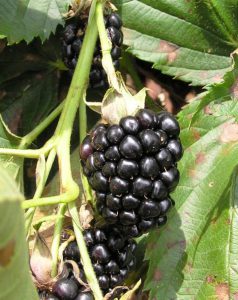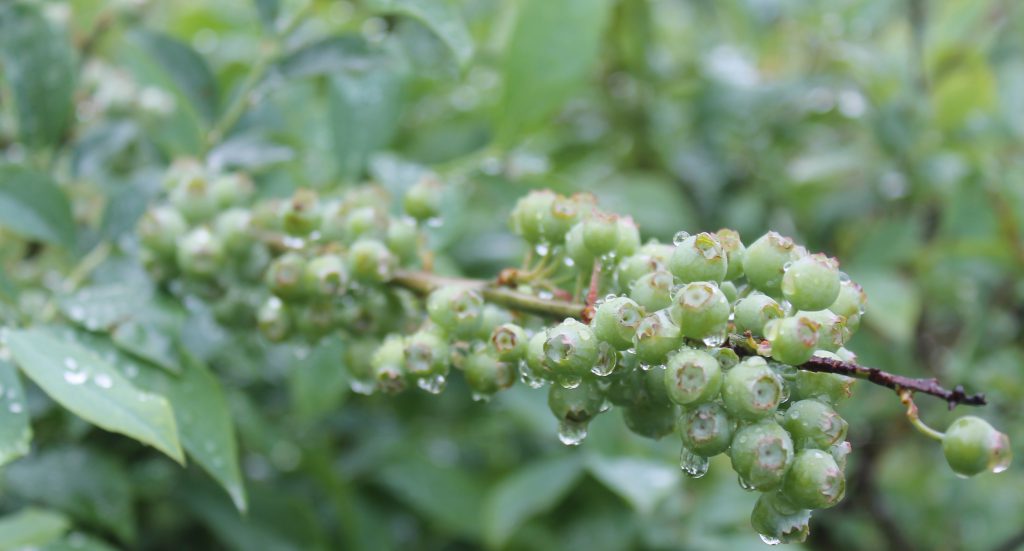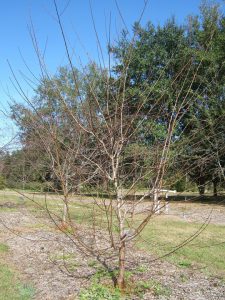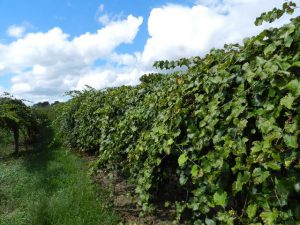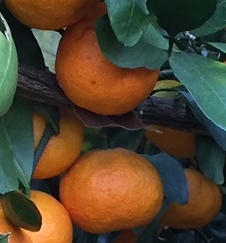
When Should I Prune My Fruit Trees?
Every winter season in the Florida Panhandle is different. It can be wet or dry, frigid cold or unseasonably warm. We may have early frosts and early springs, or cold snaps in late march after fruit trees flower.
While we cannot determine the exact time to prune the dooryard fruit trees in our rather variable region, here are some tried and true guidelines for pruning the most popular edible garden plants in northwest Florida.
Blackberries are unusual in that they do not build a large structure and fruit for years on the same branches (in general). They actually fruit on previous years’ growth which then die after fruit production. The canes that produce fruit are called the floricanes. As the floricanes are producing fruit, the blackberry plants are growing primocanes. These are the new canes that will produce fruit for the next season. By then, these canes will have matured in to floricanes. A few new blackberry cultivars exist that produce fruit on new growth as well, but most Florida adapted cultivars are of the standard type. For pruning purposes, it is best to remove the floricanes just after fruiting, but be sure not to cut the new growth (primocanes) because that wood will bear next year’s fruit. For more information about the blackberry, please see publication HS807.
Blueberries
With blueberries older canes need to be removed to make room for younger, more productive canes. When a plant reaches four to five years old it is permissible to remove about 1/4–1/5 of the oldest canes each year which amounts to about one to three of the oldest canes. Performing this task will ensure that no cane is more than three or four years old. Thus, blueberry plantings will be in a constant state of renewal and not become excessively woody and nonproductive. To keep plants from becoming too tall, mature plants can be topped in the summer directly after fruit harvest. Removal of a few inches to a foot, depending on the cultivar, will stimulate the new growth that will bear the next year’s fruit. See CIR 1192 for more information
Pruning of temperate fruit trees (Peaches, Apples, Pears, Persimmons) should be done during the winter dormant period in most cases. This period, generally between December and February allows for some latitude. Pruning later in the dormant season is better in most seasons since trees are more susceptible to freeze damage after pruning, and pruning stimulates the growth of the trees. In Northwest Florida, a February pruning is usually most desirable, depending on the season (namely average high temperatures). Pruning for shape is also done in the summer months if necessary. This task should be limited to removing excessive growth and dead / diseased wood. See HS1111 and HS14 for more information.
Muscadines
Once harvest concludes, it is usually a grower’s natural inclination to immediately prune their muscadine vines. Pruning after harvest in early fall is not, however, best for maintaining plant condition and optimizing next year’s yield, especially if there is an early frost. Early frosts can surprise the plant before sugars have been moved to the roots for storage during dormancy. Therefore, waiting to prune in mid-January to mid-March will ensure that the vine has had adequate time to go dormant and acclimate to the winter season. For more information please see this article titled “Tips for Properly Pruning Muscadines”.
Pruning is not necessary for citrus in every case, as it is in many temperate fruits, to have excellent production quality and quantity. Citrus trees perform excellently with minimal pruning. The only pruning necessary for most citrus is removing crossing or rubbing branches while shaping young trees, removing dead wood, and pruning out suckers from the root-stock. Homeowners may choose to prune citrus trees to keep them small, but this will reduce potential yield in a commercial setting, since bigger trees produce more fruit.
Often, maturing Satsuma trees produce long vertical branches. It is tempting to prune these off, since they make the tree look unbalanced. To maximize yield, commercial Satsuma growers allow these branches to weep with the heavy load of fruit until they touch the ground. This allows increased surface area for the tree, since the low areas around the trunk are not bare. Additionally, weeds are suppressed since the low branches shade out weed growth. The ground under the trees remains bare, thus allowing heat from the soil to radiate up during cold weather events. The extra branches around the trunk offer added protection to the bud union as well. If smaller trees are desired for ease of harvest, ‘flying dragon’ root-stock offers dwarfing benefits, so that the mature scion cultivar size will only grow to 8-10 feet tall.
Fig
Figs should be pruned after fruit production, which usually occurs in early summer. In the winter it is fine to remove dead or diseased wood, but drastic trimming will reduce yield since fruit is borne at the terminal of the previous year’s growth. For more information, please consult publication HS27.

